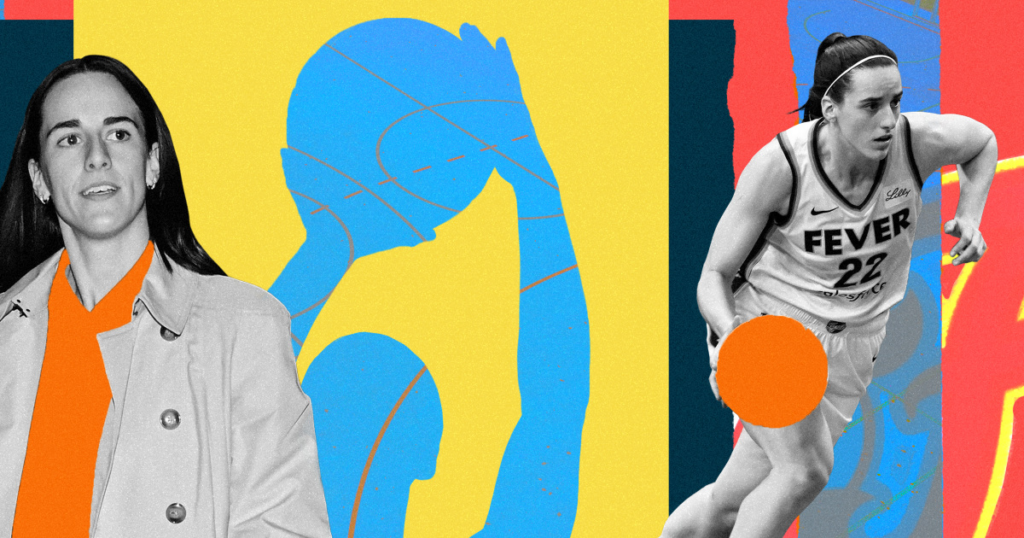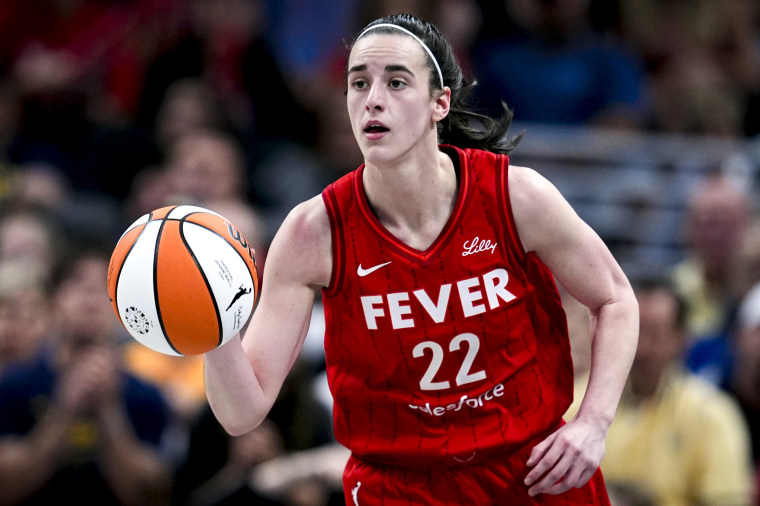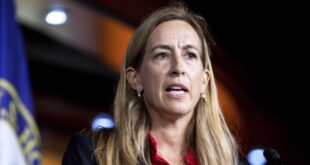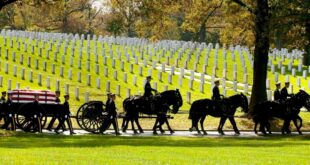
When the WNBA returned to action last week, Ryan Brewer, like many who follow the league, was curious to see how Indiana Fever star Caitlin Clark might top her rookie-of-the-year season.
Yet the interest of Brewer, an associate professor of finance at Indiana University Columbus and an expert at valuations, goes beyond Clark’s box-score averages. After Clark’s phenomenal popularity spiked attendance and merchandise sales and drew historic television ratings wherever the Fever played in 2024, Brewer was asked by the Indianapolis Star to evaluate her economic impact on the WNBA. He determined Clark was responsible for a staggering 26.5% of all WNBA economic activity last season, including revenue from merchandise, ticket sales and television.
When Brewer crunched the numbers to analyze her potential impact in 2025, he arrived at a valuation that “is quite impressive,” Brewer said.
“If things just go as they were, and we have an expanded season of 22 home games with modest inflation, I’m looking at $875 [million],” Brewer told NBC News. “And I could easily see that eclipsing a billion dollars on the economic impact of Caitlin Clark this year.”
The WNBA’s 29th season opens at a time when its basketball is impossible to untangle from its bottom line. And Clark has played a propulsive role in both.
For the first time since 2008, the WNBA expanded this season to add a 13th team, the Golden State Valkyries. Next season, two more will debut in Toronto and Portland. As the WNBA’s footprint grows, so do its coffers. In 2026, the league will enter the first year of an 11-year media-rights deal worth a reported $2.2 billion overall that is expected to triple its current media-rights revenues. (One of the media partners is NBC, which shares a parent company with NBC News.)

Anticipating the arrival of the new media revenue, the players union opted out of its collective bargaining agreement with the league last October and will spend the upcoming months negotiating a new deal that the union hopes will lead to higher salaries.
Clark earned $76,535 as a rookie and this season will receive a slight pay raise, amounts dwarfed by her endorsement portfolio that reportedly includes an eight-year, $28 million deal with Nike. It would be “impossible” to pay Clark what she is worth to the league, her agent told ESPN in February. That could be because although viewership across women’s sports was already on the rise by the time Clark emerged as a superstar at the University of Iowa, her popularity has supercharged the WNBA’s own.
While an average of 17,035 fans attended the Fever’s 20 home games — more than the city’s NBA team, which shares the same arena, averaged over 41 games — overall WNBA attendance increased from an average of 6,615 in 2023 to 9,807. Last season, as Fever games produced the most-watched WNBA games ever on ESPN, ESPN2, ABC, CBS and NBA TV, leaguewide viewership also broke records, including an average of 1.2 million per ESPN broadcast.
The WNBA, as a private company, does not disclose revenue figures, a league spokesperson said. Yet the league reported last year that its merchandise sales through Dick’s Sporting Goods had increased by 233% over the previous season. A spokesperson for Fanatics, the WNBA’s official e-commerce partner, said that Clark ranks in the top 20 of its top-selling athletes across all sports, and sixth among all basketball players, including the NBA.
The rising tide associated with Clark continued to lift other boats: All WNBA merchandise sold by Fanatics increased by more than 500% last season versus 2023, the spokesperson added.
Clark’s effect shows few signs of abating in 2025. Earlier this month, 1.3 million viewers tuned in on ESPN to watch an Indiana preseason game played at Clark’s alma mater, Iowa — an audience that was bigger than all but two NBA preseason games on ESPN since 2010 (and both of those games included LeBron James), per Sports Business Journal.
Of this season’s 10 bestselling WNBA games on StubHub, all 10 involve the Fever, according to a spokesperson for the online ticket retailer. When the Fever are the visiting team, the average price of tickets sold jumps by 140%. And the average price of a ticket to catch Clark and Indiana on the road this year is $312, according to the company.
Clark is “not just driving demand for the Fever, she’s elevating interest across the entire league,” Adam Budelli, a StubHub spokesperson, said in a statement.
Last year, Sportico pegged the value of the Fever franchise at $90 million, slightly less than the estimated league average. Yet in Brewer’s analysis, the net effect of Clark’s presence drove his valuation of the Fever to closer to $340 million. Brewer also calculated that Clark’s presence, should the interest in her performances be maintained, would result in an economic impact of approximately $41 million to the city of Indianapolis.
Clark wasn’t the only rookie last season to draw significant interest to the league. Her rivalry with Chicago’s Angel Reese, dating to college, led an average of 2.5 million viewers to watch their May 17 matchup, the most ever for a WNBA game on ESPN. Yet as Brewer analyzed attendance and viewership figures from the 2024 season, these indicated that Clark’s influence was singularly responsible for the surge of new interest in the WNBA.
Of the 24 WNBA-related broadcasts that drew at least 1 million television viewers last season, 21 involved her, according to an analysis by Sports Media Watch that included the league’s draft and All-Star Game. All three WNBA games that drew more than 20,000 fans included the Fever.
“It’s important to recognize that there is this rival and there are other rivals, but Caitlin Clark is illuminating the sport,” Brewer said. “She particularly is the one who’s driving in a new kind of demographic that is reaching new kinds of people from the traditional WNBA fan base that is causing this growth rate and also accelerating interest in corporate sponsorships.”
To analyze her economic impact, Brewer in part created models that projected the WNBA’s attendance for last season based on the league’s growth in the years pre-Clark. He then compared it to the actual attendance change and found about 60% of that increase is attributable to Clark.
“Her ability to fill up stadiums is amazing,” he said.
And that interest has been felt strongly in Indianapolis, where a $78 million practice facility solely for the Fever is under construction.
In 2024, after Indiana drafted Clark No. 1, Visit Indy, a nonprofit that promotes tourism to the city, sprung into action. It placed paid advertising throughout Iowa, including on social media, to test whether Clark’s die-hard collegiate fans might have an appetite to make the trip to Indiana to watch her as a pro. Soon, visits to pages on Visit Indy’s website dedicated to the Fever increased by 501%, said Chris Gahl, Visit Indy’s executive vice president and chief marketing officer. Fever home games also corresponded with a bump in booked hotel rooms in the city, he said.
Part of Gahl’s job is to persuade those in charge of booking large, corporate meetings and conventions to host them in Indianapolis. Last year, he found a new way to entice nearly 50 planners to check out the city for the first time: Taking them to a Fever game.
The planners, who were predominantly women, “would not have traveled here and visited here were it not for the invitation for them to come see a home Fever game,” Gahl said.
“An Indiana Fever home game is a very hot ticket.”
 Latest World Breaking News Online News Portal
Latest World Breaking News Online News Portal






